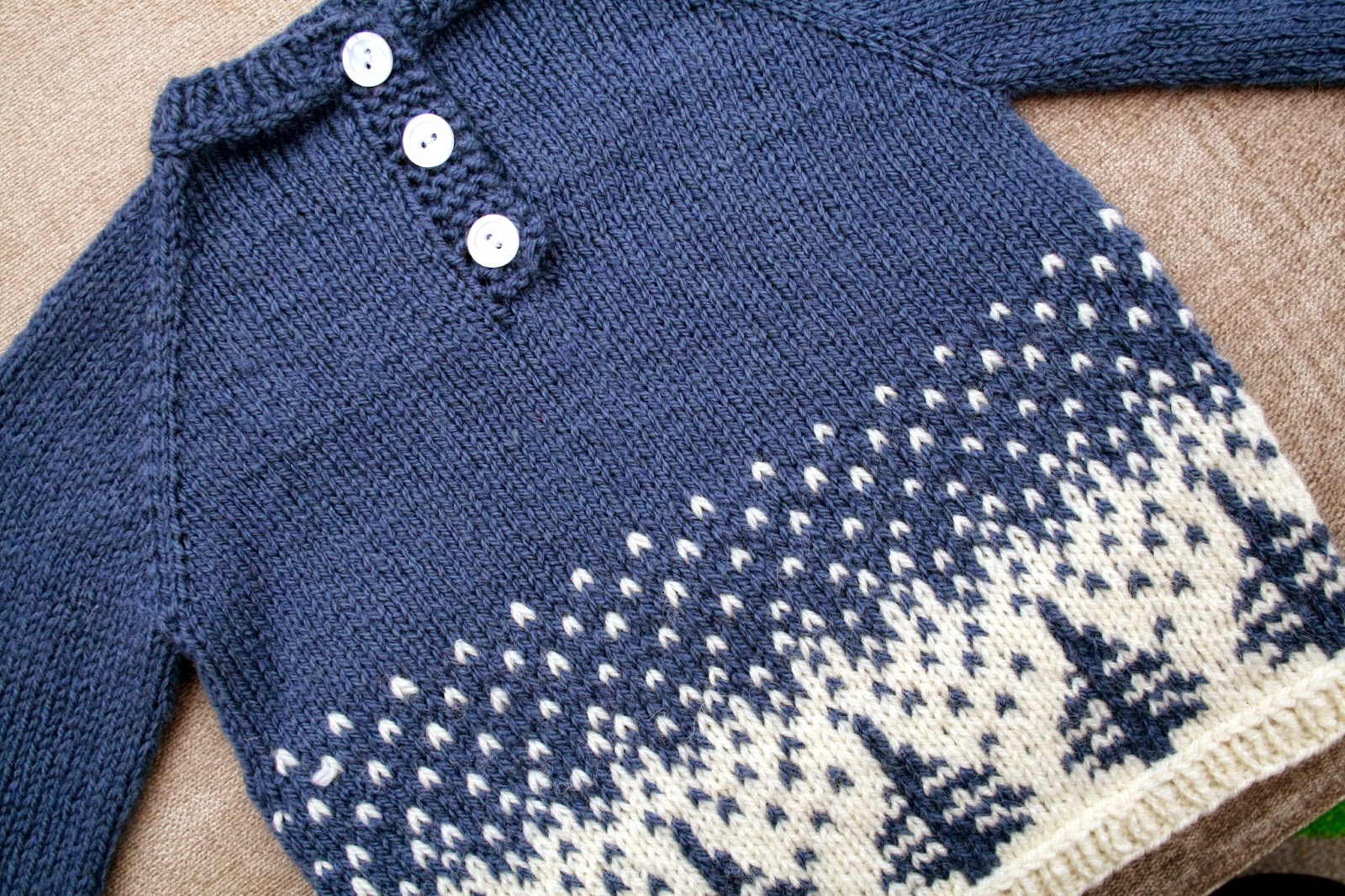December 2014
This was a very special type of fair isle project. It was knitted in the round from the bottom up, and then cut down the middle of the front to turn it into a cardigan. This process, known as steeking, had always terrified me in the past, but this time I cracked it.
This is knitted in Rowan felted tweed which in my experience tends to grow when you block it. My measurements were - before blocking:
Chest: 35”
Waist: 31”
Hip: 40”
Length: 24”
And after blocking:
Chest: 39”
Waist: 36”
Hip: 42”
Length:25.5”
I would suggest looking carefully at the schematic before casting this on, as it’s a bit wider around the hips than the bust. Probably flattering on a lot of women, but I’m top-heavy, so not ideal for me. A bit of stretching around the bust on blocking left me with a decent fit though.
This was a very special type of fair isle project. It was knitted in the round from the bottom up, and then cut down the middle of the front to turn it into a cardigan. This process, known as steeking, had always terrified me in the past, but this time I cracked it.
Hedgerow comes from Ann Kingstone's Stranded Knits, a book which includes a lot of helpful information about all the techniques needed. There are several different ways to work a steek, but I reenforced mine using a sewing machine, as she felt that was the most secure method.
There's quite a lot of finishing once the steek is cut. The button band has to be picked up and knitted, the buttons sewn on, and then the steek stitches (a column of extra stitches which you cut down the middle of) have to be sewn down to the inside of the cardigan. I finished mine off by sewing a navy blue 1.5cm velvet ribbon over the top, which looks really nice. We weren’t sure whether to sew it all the way around or just over the steeked bits, but we thought the first option looked neater.
Being a bottom up project, the body and sleeves are knitted separately, and then joined at the underarm so that the yoke can be worked in one piece. Both the body and sleeves have to be at the same position on the colour work chart when they are joined, so to give myself a bit of flexibility, I started the sleeves with a provisional cast on, and higher up the chart than the pattern specified. That meant that I could go back and pick up the live stitches and work the bottom of the sleeves and the cuffs after cutting the steek, once the cardigan could be tried on. I'm really pleased I did it that way.
This is knitted in Rowan felted tweed which in my experience tends to grow when you block it. My measurements were - before blocking:
Chest: 35”
Waist: 31”
Hip: 40”
Length: 24”
And after blocking:
Chest: 39”
Waist: 36”
Hip: 42”
Length:25.5”
I would suggest looking carefully at the schematic before casting this on, as it’s a bit wider around the hips than the bust. Probably flattering on a lot of women, but I’m top-heavy, so not ideal for me. A bit of stretching around the bust on blocking left me with a decent fit though.
The colour combination I used was made up as I went, and Ann Kingstone left me a comment on ravelry to say she loved it, which I was very chuffed about. I found the original colours a little too bright for my taste. The shades I used were called Seafarer, Watery, Duck Egg, Bilberry, Camel and Avocado. Left over bits of the Camel, Seafarer, Bilberry and Watery went towards Corona Borealis.
Pattern: Hedgerow by Ann Kingstone from Stranded Knits
Size: See above
Yarn: Rowan felted tweed dk
Colours: See above
Needle 3.00mm
On ravelry: here
Pattern: Hedgerow by Ann Kingstone from Stranded Knits
Size: See above
Yarn: Rowan felted tweed dk
Colours: See above
Needle 3.00mm
On ravelry: here






